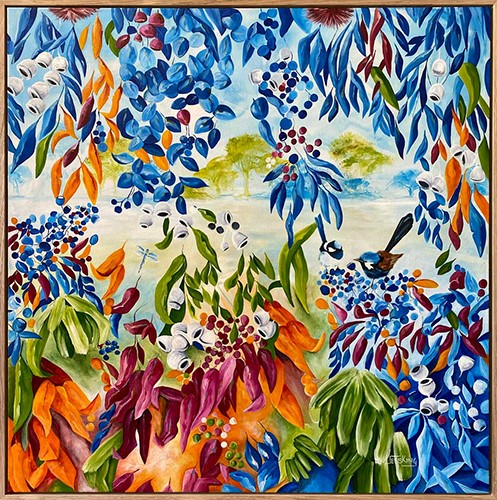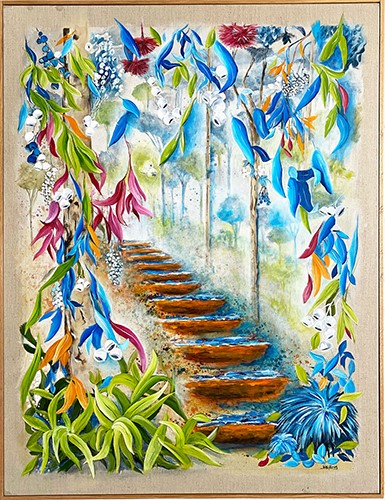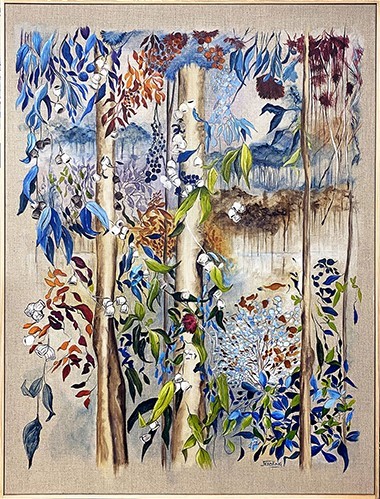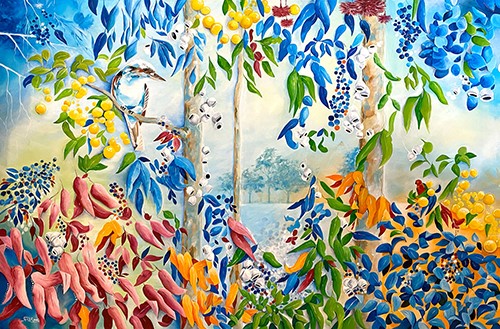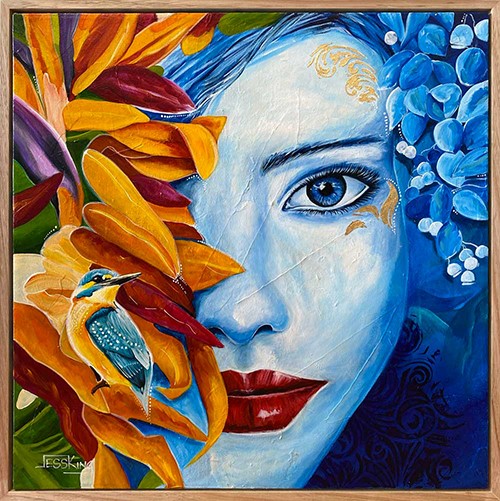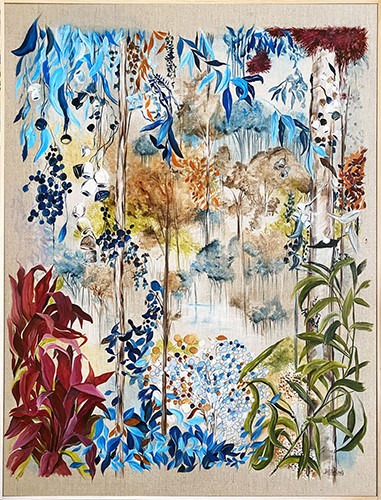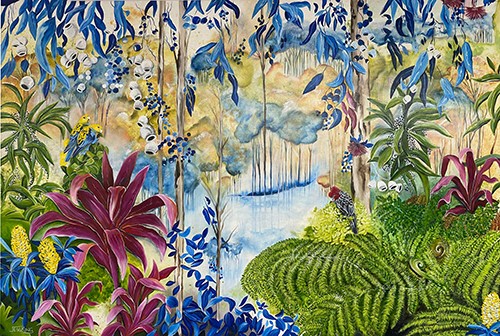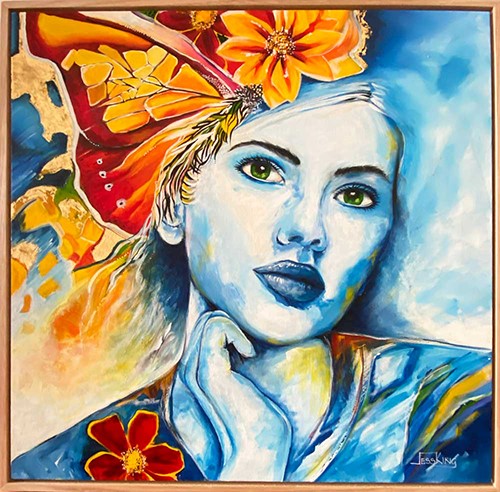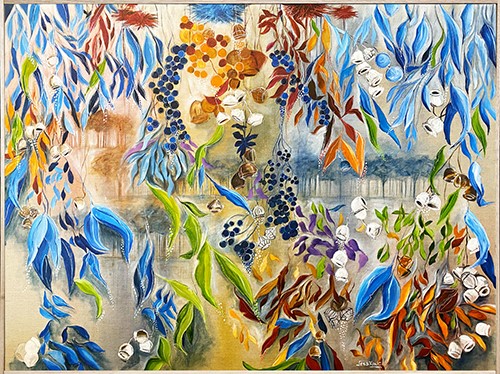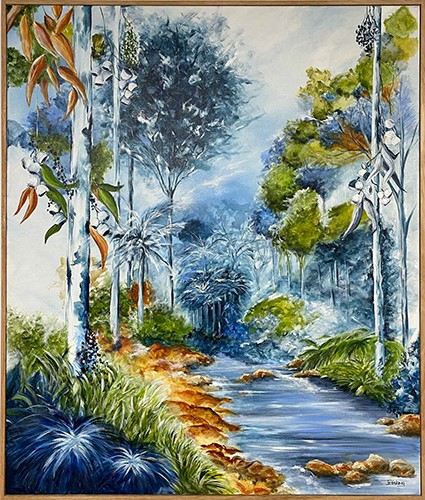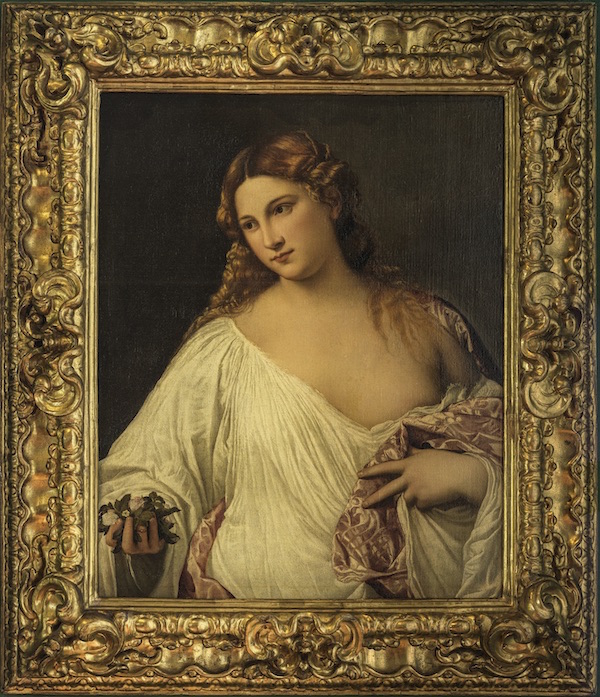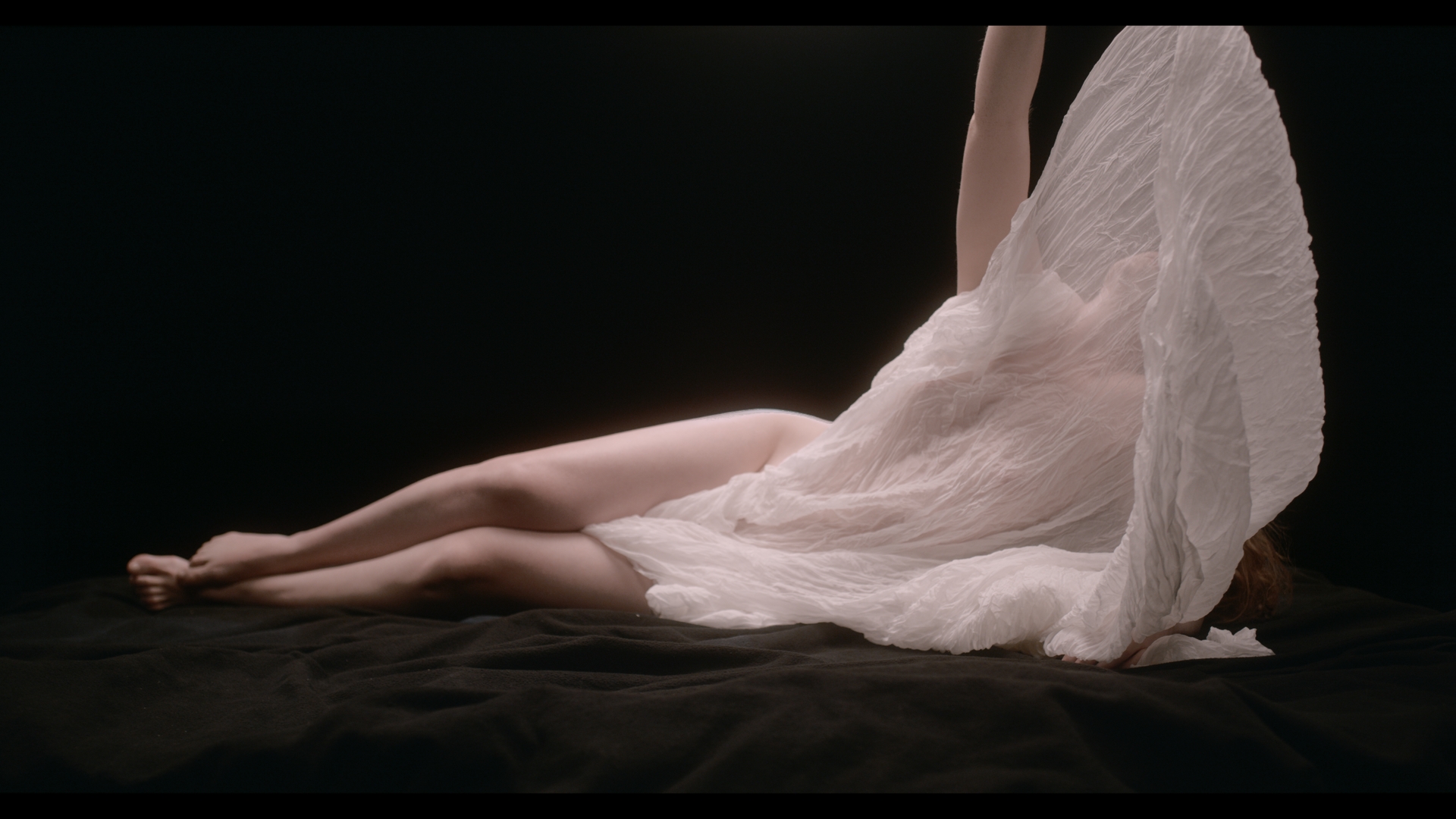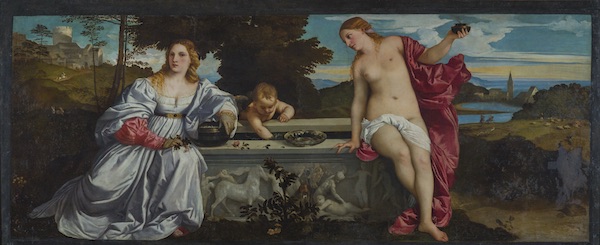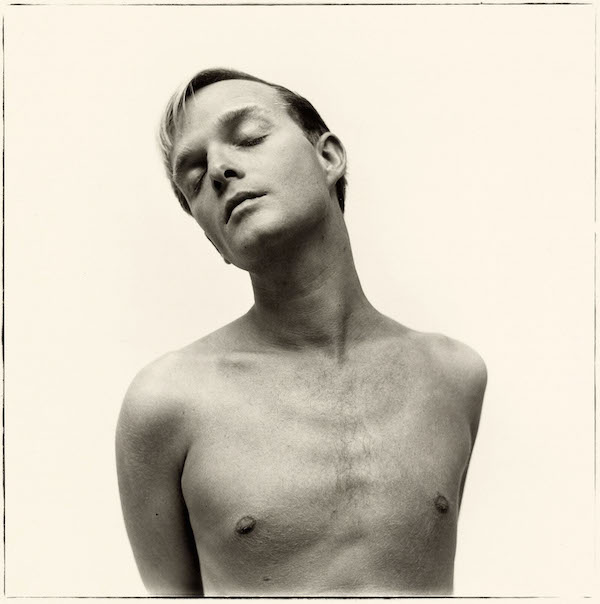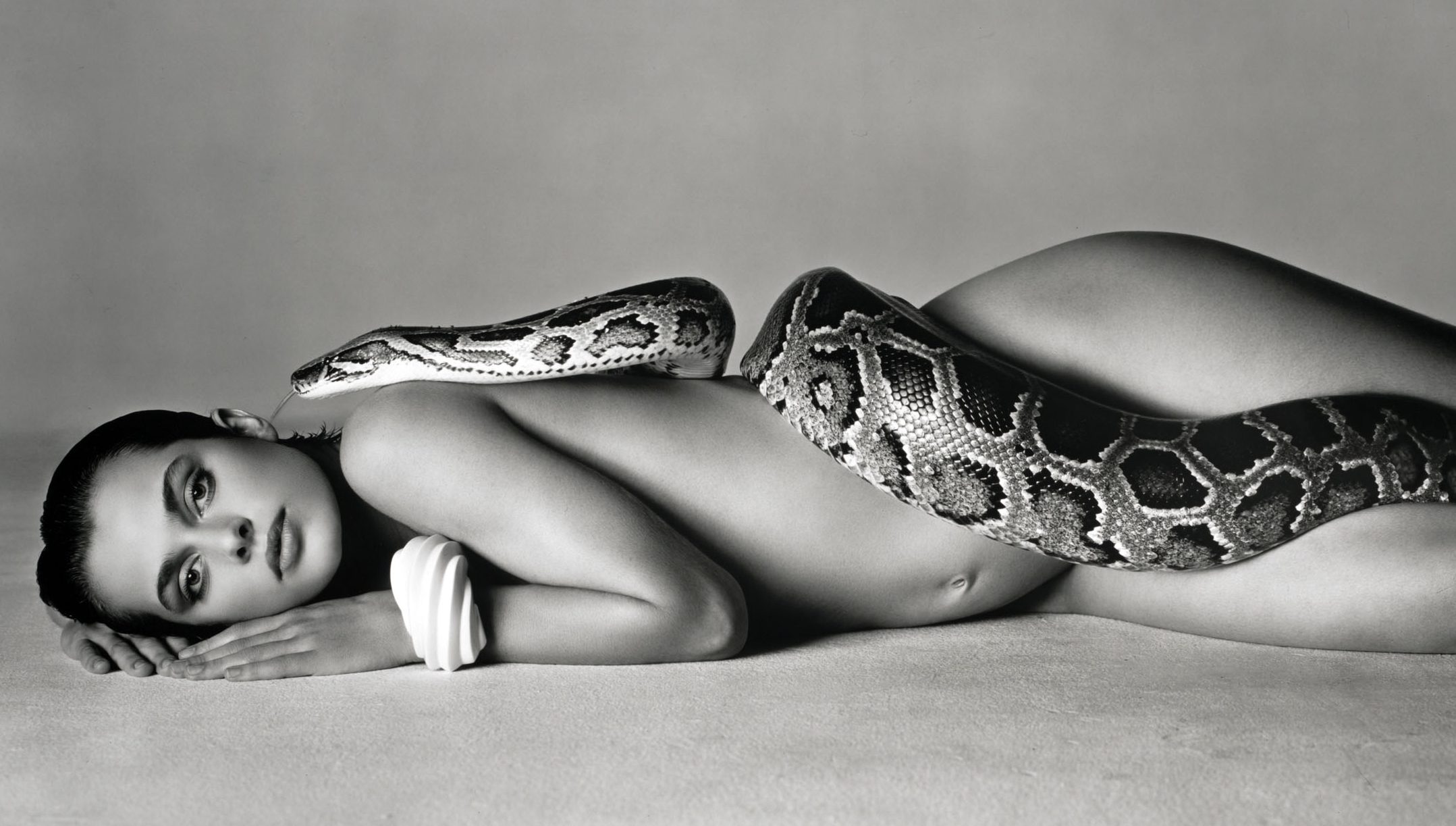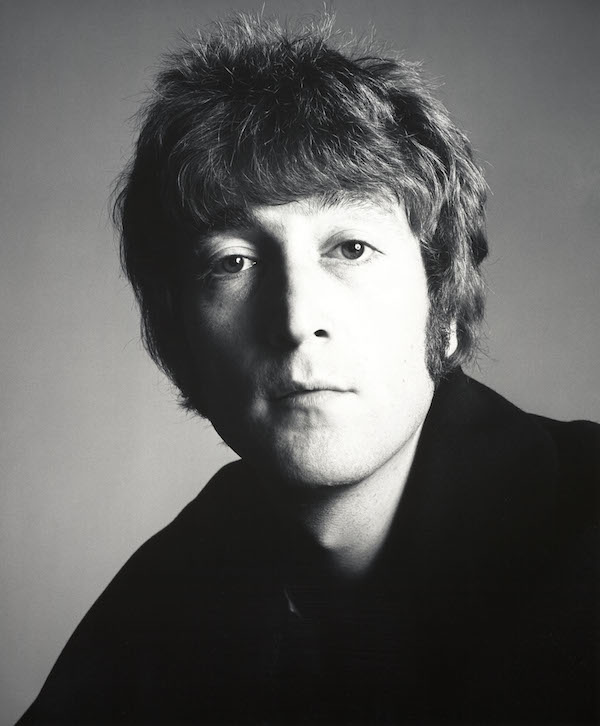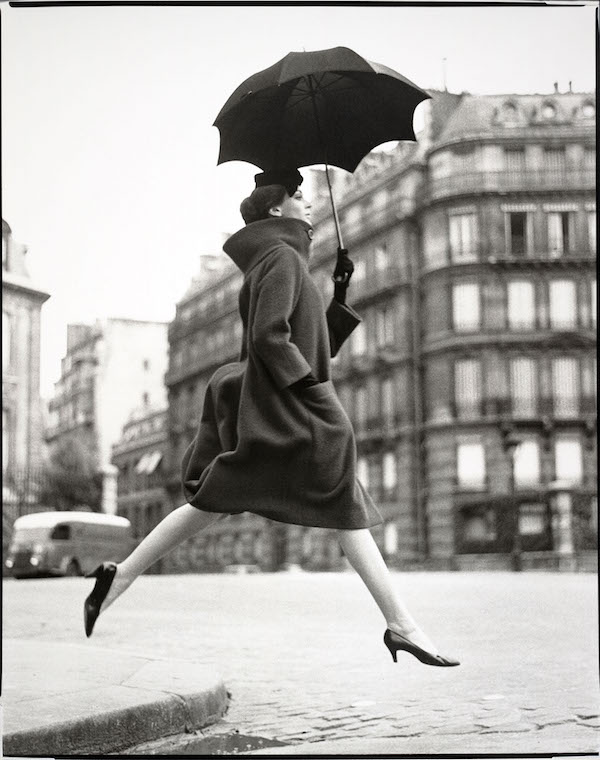Pablo Picasso, Harlequin with mirror1923, Oil on canvas, 81 x 100 cm, Madrid, Museo Nacional Thyssen-Bornemisza © Succession Pablo Picasso, VEGAP, Madrid, 2022
He was called Pablo Picasso and was about to enter the pink of the most sought after painters in Paris, while Gabrielle Chanel (for all Coco) had started her career as a milliner, becoming an established designer with her shops opened in Paris (1910), Deauville (1912) and Biarritz (1915).
Intuition and an insatiable desire to learn had led her to surround herself with musicians, writers and painters and even become a patron, financially assisting Stravinsky, the poet Pierre Reverdy and Jean Cocteau on several occasions.
Mademoiselle soon began to become an integral part of the Parisian artistic and intellectual universe of the time, to the point of declaring that she had learned “rigor from artists”.
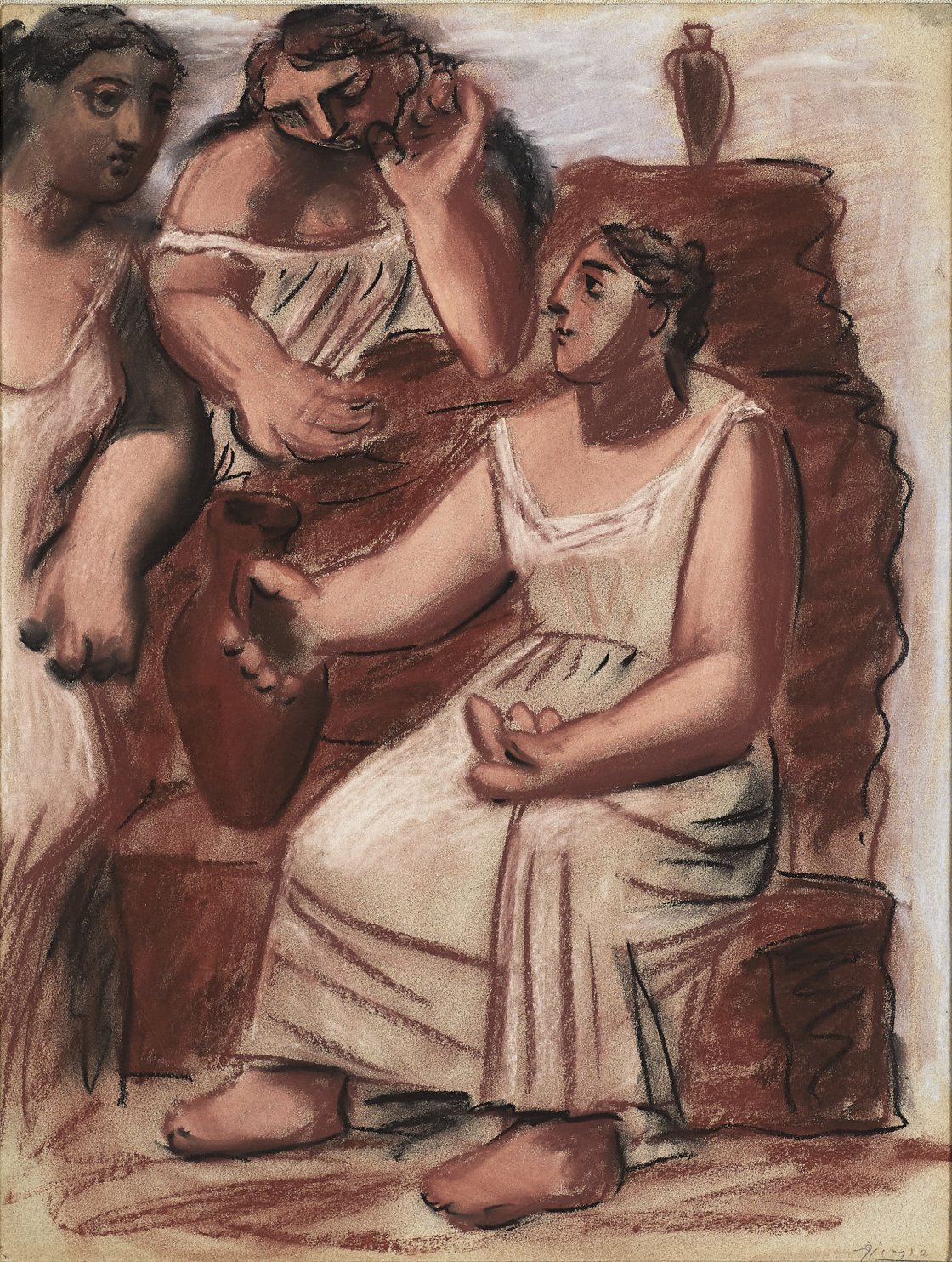
Pablo Picasso, Three women near a fountain, 1921, Pastel on paper applied on canvas, 51 x 66 cm, Private collection | Courtesy Tobias Mueller Modern Art, Zurich © Succession Pablo Picasso, VEGAP, Madrid, 2022
Picasso and Chanel collaborated professionally on two occasions, both with Jean Cocteau: in comedy Antigone (1922) and in Serge Diaghilev’s ballet, Le Train Bleu (1924). Their meeting is the fulcrum of the exhibition that will be welcomed from the start from 11 October in the halls of Museo Nacional Thyssen-Bornemisza in Madridwhich will bring together art and fashion in an original exhibition project.
Chanel was not only a great stylist, but also used her talent in theater and film. Her debut dates back to 1911, when her straw hat entered the scene of Bel Amiby Guy de Maupassant, resting on the head of actress Gabrielle Dorziat.
Coco’s fame came after the outbreak of the First World War, when the new presence of women in the workplace sparked the need for more practical clothes. Chanel thus opted for a loose and beltless style, shortening her clothes for greater ease of movement, adding large and practical pockets and eliminating any unnecessary adornments.
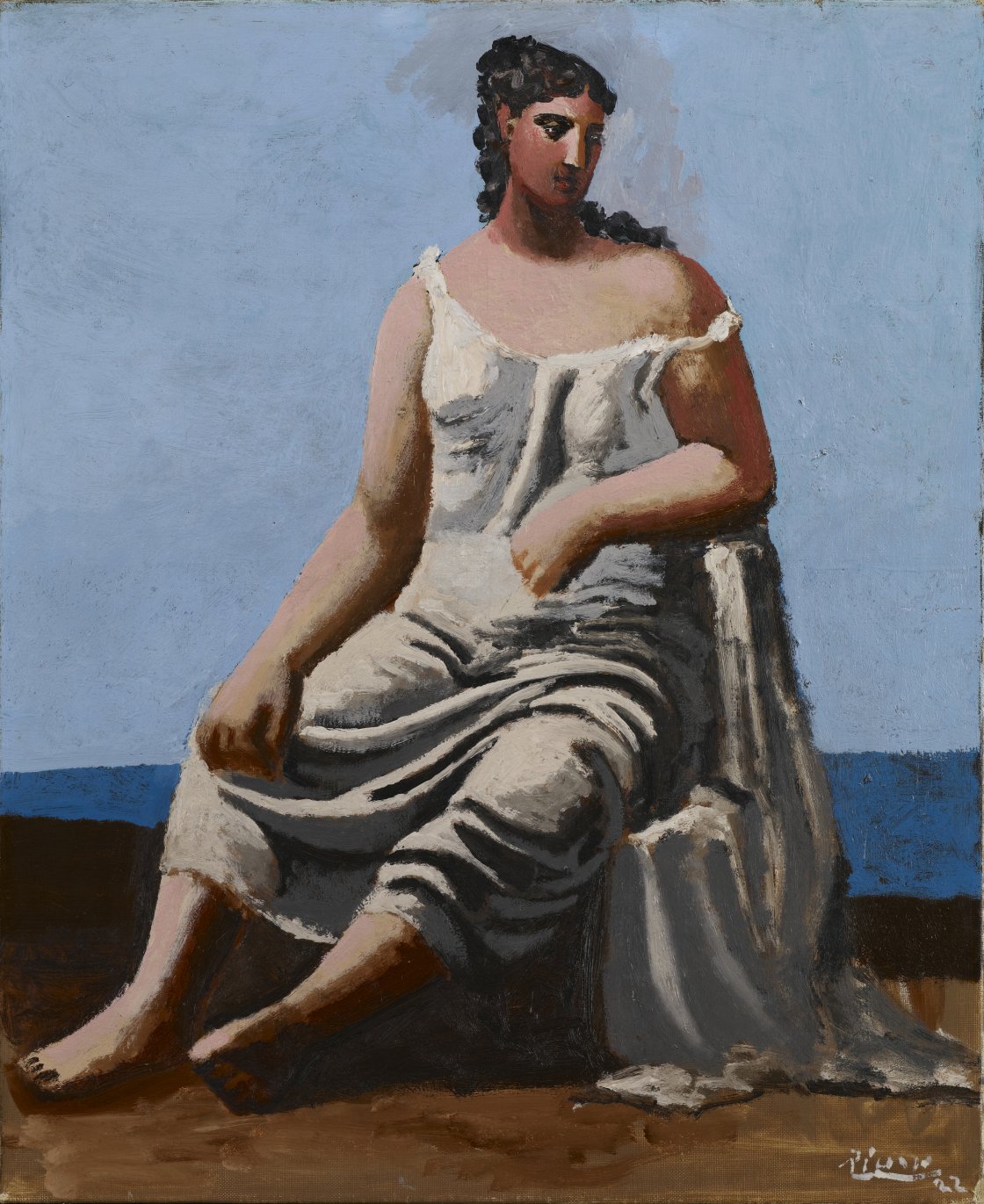
Pablo Picasso, Woman by the sea, 1922, Oil on canvas, 48.3 x 58.4 cm, Minneapolis Institute of Art, bequest of Putnam Dana McMillan. © Pablo Picasso Succession, VEGAP, Madrid, 2022
Curated by Paula Luengo, head of the museum’s exhibition department, the itinerary Picasso / Chanel will bring together an exceptional selection of clothes, but above all oil paintings, drawings and objects on loan from American and European museums, as well as from private collections, and will see the generous collaboration of Almine and Bernard Ruiz-Picasso, Patrimoine de CHANEL and the Musée national Picasso of Paris.
Venturing between fashion and art, the visitor will be invited to explore four major sections that proceed in chronological order, roughly embracing the years from 1910 to 1930. In this journey, the change introduced by Chanel in the ways of dressing is equated with the break caused by representation of reality by the artistic avant-gardes through non-visual values. The direct comparison between Chanel’s drawings and Picasso’s work will open a world on the formal relationship between the two creatives and on the bonds that bind their respective creations, the result of shared influences and mutual admiration.
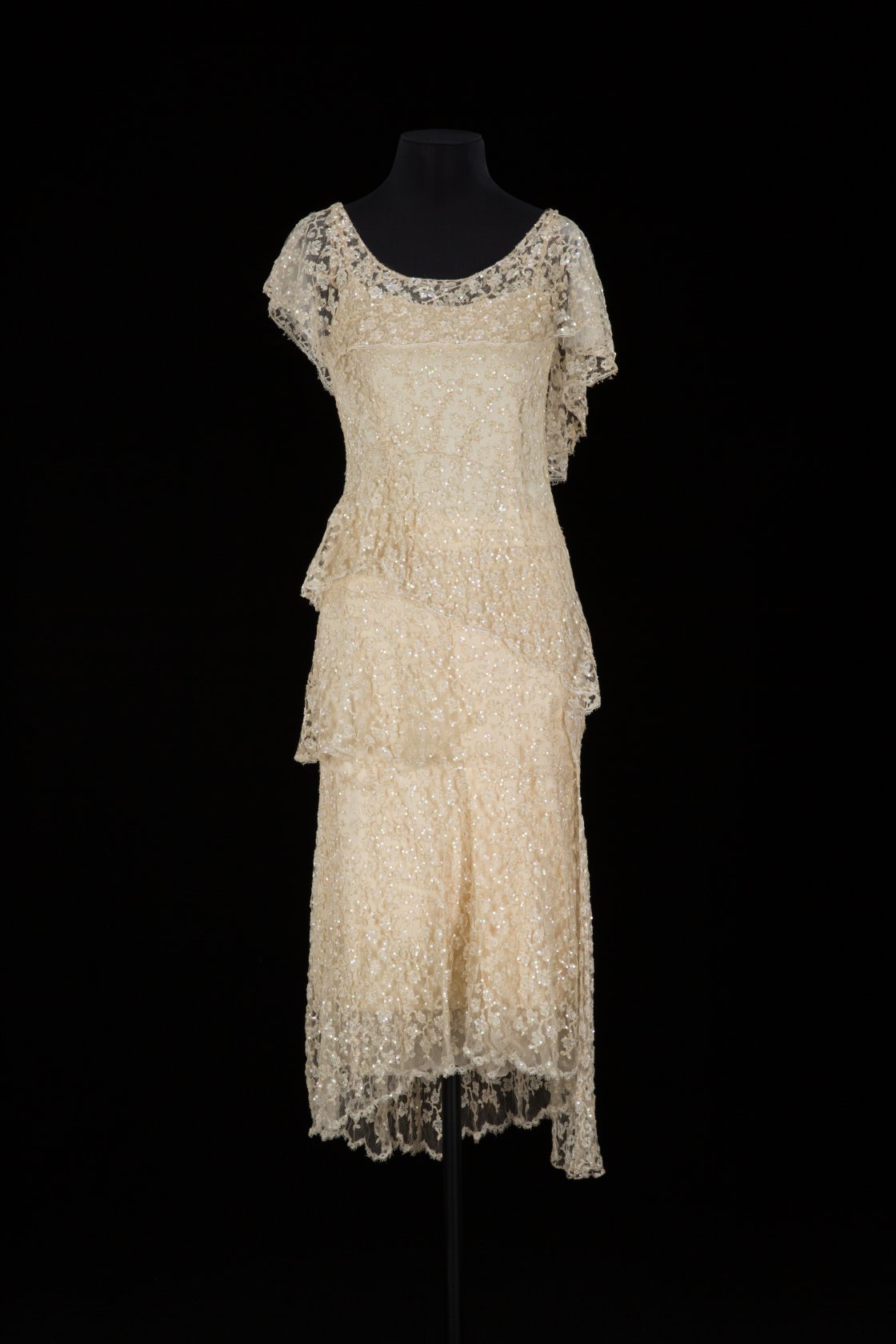
Gabriele Chanel, Evening dress, 1929-1930, Lace, silk, tulle and sequins. Patrimoine de Chanel, Paris © CHANEL
If Chanel creates the “uniform” of the dynamic woman of the twentieth century, Picasso formulates a new canon of visual beauty that becomes his style. Self “Chanel style and cubism” will reveal the influence of the formal languages of the great artistic movement on the couturière’s work – evident in dresses with straight and angular lines and in the preference for blocks of color, together with black, white and beige – the second section, entitled “Olga Picasso”, focuses on the many portraits that the master made of his first wife, the Russian dancer Olga Khokhlova, a loyal customer of Chanel. Picasso and Olga married in Paris in July 1918. They met in Rome in early 1917 while the painter was working on the sets of Parade. In the numerous portraits of his wife that Picasso portrays in thoughtful poses, intent on reading, writing, or sewing, the clothes Olga wears clearly reveal Chanel’s chic style with its linear and simple cut. Olga had to feel comfortable with the stylist’s relaxed models, comfortable dresses, adapted to the movement of the body, governed by the same principles of early modern dance.
The exhibition includes some Chanel creations made in those years, which establish a perfect dialogue with Olga’s clothes and with her style, as emerges from the portraits on display, such as the Portrait of Olga Khokhlova (1917) from the Fondation Marie Anne Poniatowski Krugier, il Portrait of Olga with fur collar (1923) from the Fundación Almine y Bernard Ruiz-Picasso para el Arte, Madrid and the charcoal drawing Olga with Flower Garland (1920) from the Musée national Picasso-Paris, on loan to the Musée des Beaux-Arts de Lille.
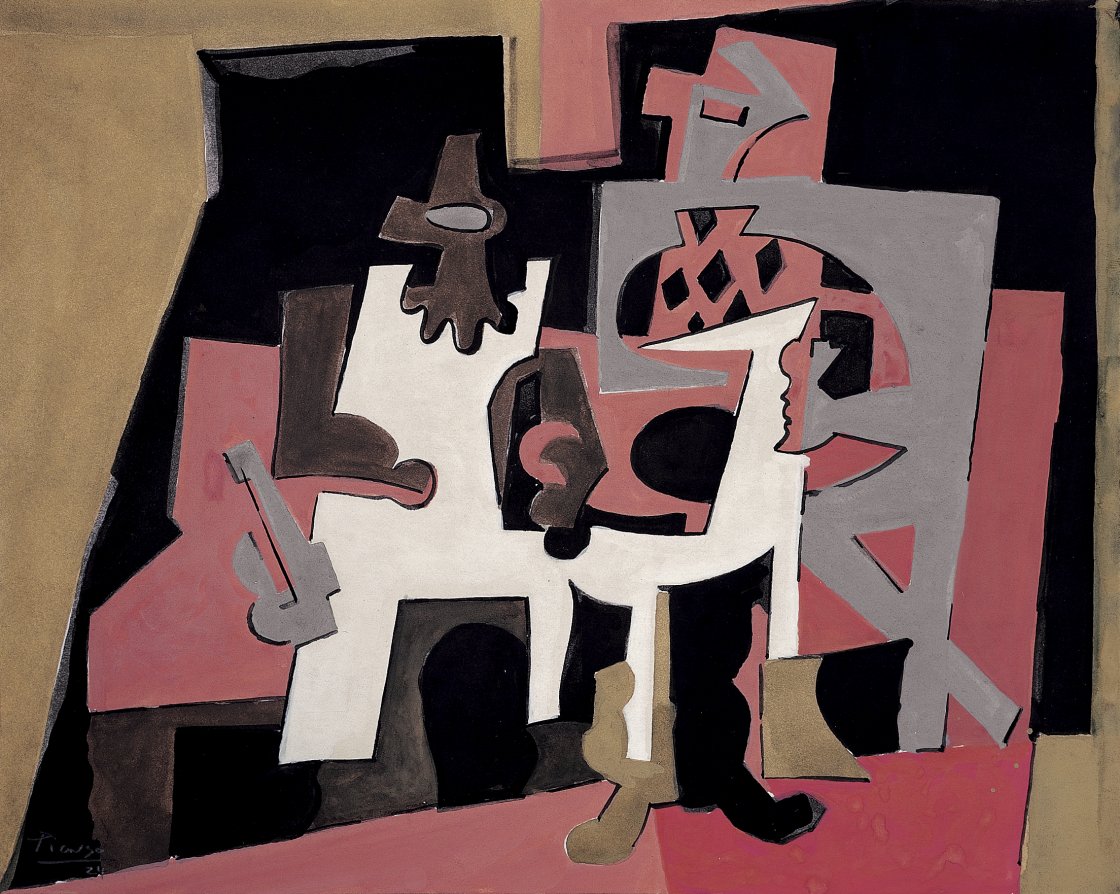
Pablo Picasso, Untitled / Harlequin and Pulcinella, 1924, Tempera on paper, 29.5 x 23.7 cm, Fundación MAPFRE Collections © Succession Pablo Picasso, VEGAP, Madrid, 2022
The shared passion (and inspiration) of Coco and Picasso for classical Greece is evident in the section entitled “Antigone”, Cocteau’s modern adaptation of Sophocles’ opera, which premiered in Paris in 1922 with sets and masks by Picasso and costumes by Chanel.
In the summer of 1922 Jean Cocteau wrote an abridged version of Sophocles’ tragedy, the first professional project that involved both Picasso and Chanel. It made its debut in December of the same year at the Théâtre de L’Atelier in Montmartre, directed by Charles Dullin and with an experimental set design. The public will admire works such as Three women near a fountain (1921), Seated woman (1921) and The three Graces (1923), alongside studies for the production sets, three portraits of Picasso by Cocteau and the only known depiction of Antigone, on a Greek vase of about 390-380 BC on loan from the British Museum. On the other hand, it was during his first trip to London, in May 1919, that Picasso carefully studied the classical works of art exhibited in that museum. Chanel also looked to archaic Greece to create costumes in thick Scottish wool fabric in shades of brown with touches of brick red that matched well with the set and color range chosen by Picasso.
Thus the exhibition includes various models of clear classical inspiration, in particular evening dresses.
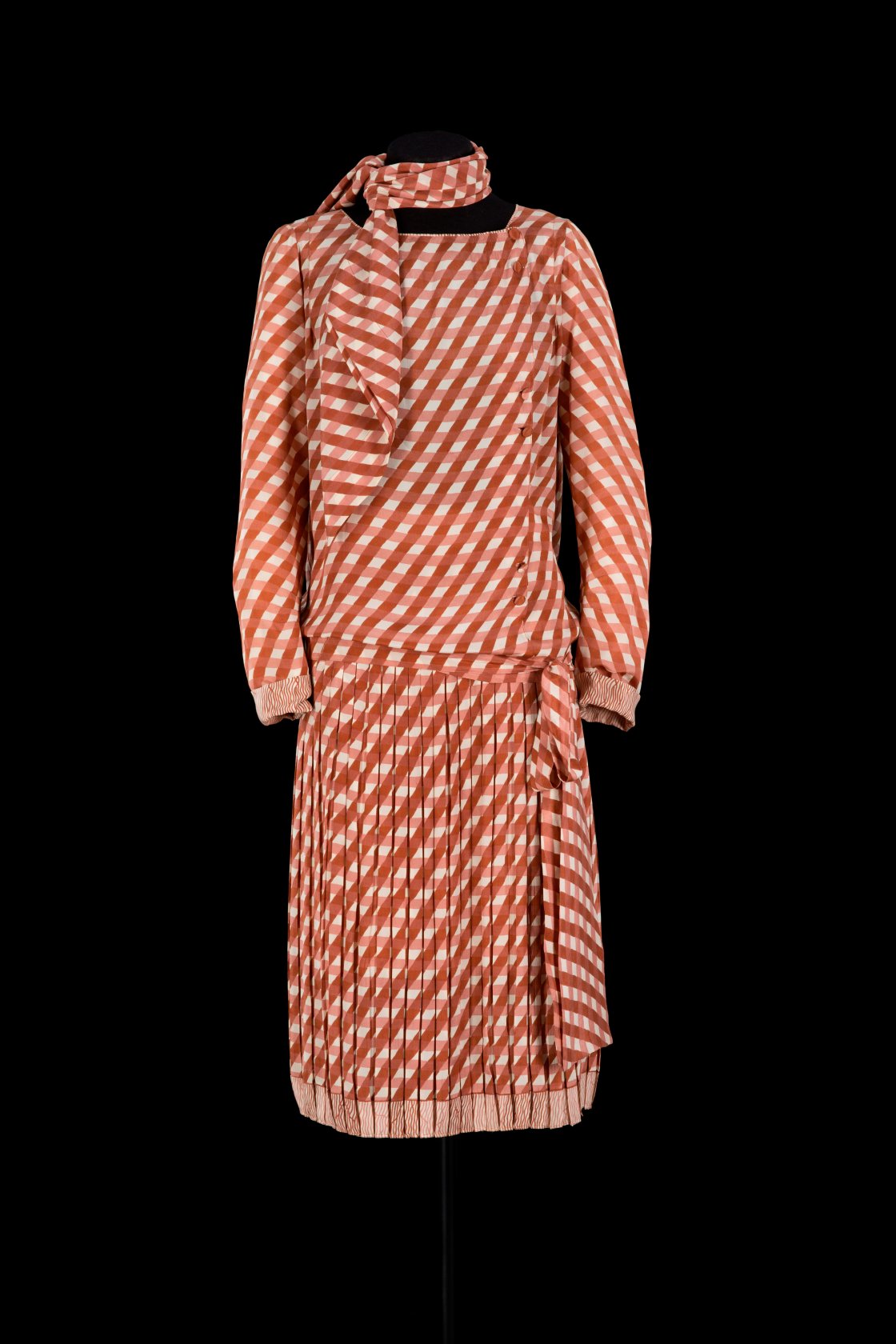
Gabrielle Chanel, Ensemble, 1926-1928, Crêpe de Chine | Legacy of Chanel, Paris © CHANEL
Le Train Bleu, title of the ballet produced by Diaghilev in 1924, on a libretto by Cocteau, inspired by sports and seaside fashion, also marks the second and last professional collaboration between the two. The fourth and last section of the exhibition is dedicated to this ballet, which premiered in June at the Théâtre des Champs-Élysées in Paris. The idea was to create a modern and fun work, inspired by activities that were fashionable in the early 1920s, such as sunbathing and playing sports, involving cosmopolitan characters such as those who regularly boarded the Train bleu, the luxurious train nocturnal which connected Paris with the Côte d’Azur and which gave the ballet its name.
Chanel, a sports enthusiast, had designed the costumes for the dancers, drawing inspiration from the sportswear she created for herself and her clients. Diaghilev had come across gouache Two women running on the beach in Picasso’s studio and had asked the artist if he could use it for the curtain. Picasso accepted. Alongside that iconic painting, the exhibition displays related works such as Woman by the sea (1922) and Seated woman in shirt (1924), as well as The bathers (1918), a small masterpiece in which Picasso depicted modern women wearing swimsuits very similar to those that Chanel would use years later for the dancers of this production. The costumes on display in the exhibition are reproductions of the originals, made by the Opéra de Paris for the 1992 production of Le Train Bleu.
The route, which also wants to celebrate Picasso, on the fiftieth anniversary of his death (which occurs on 8 April 2023) will be open from Tuesday to Sunday from 10 to 19, Saturday from 10 to 21.


